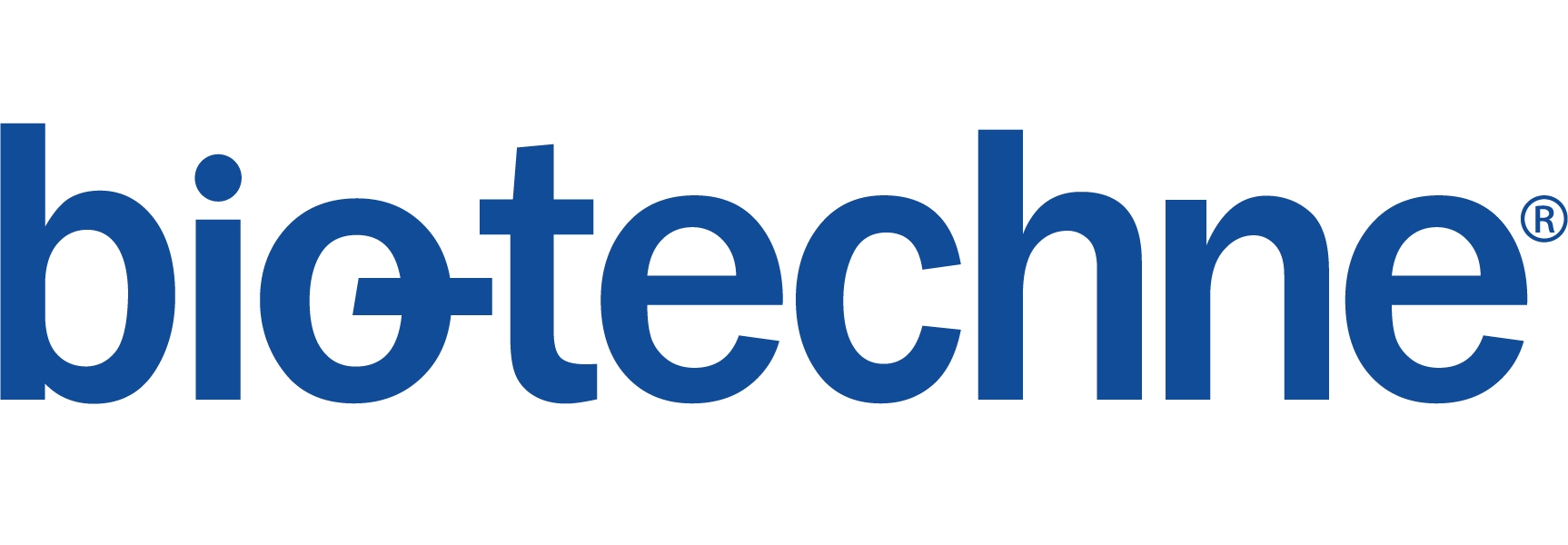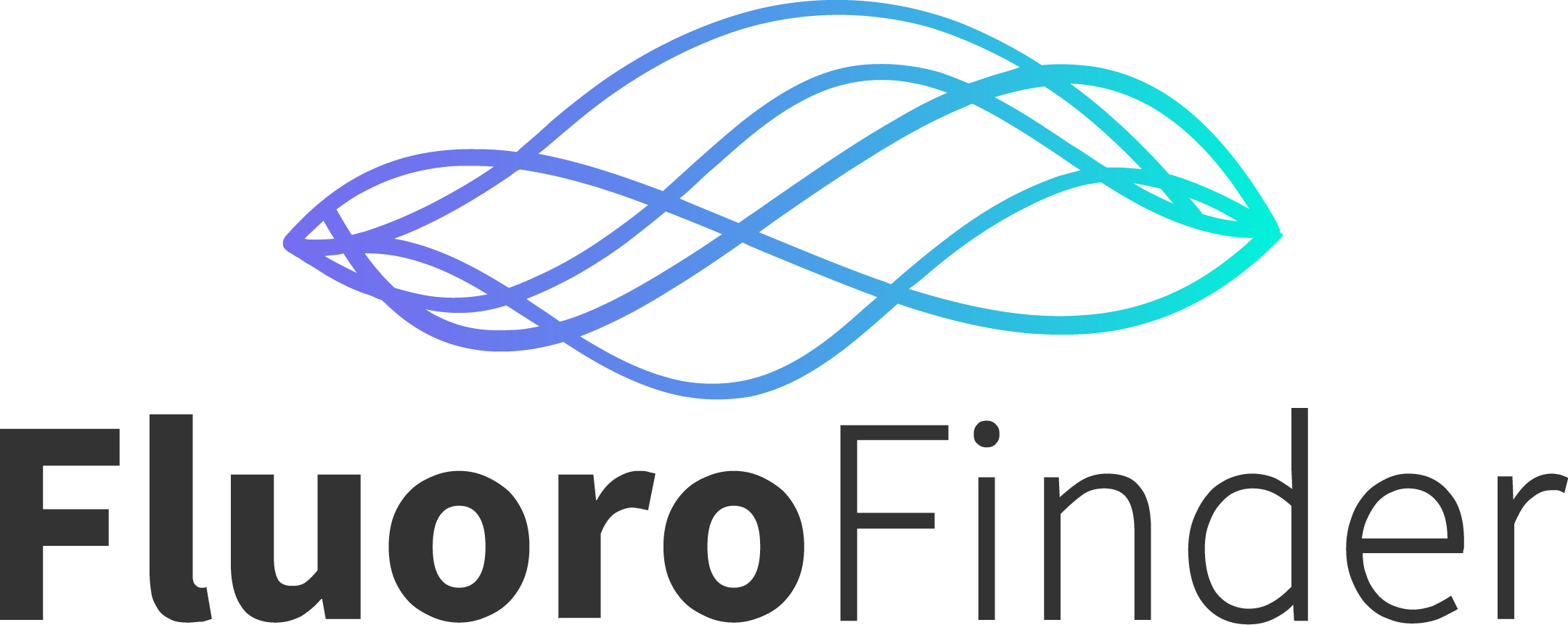-
GENE_NAME : CD13
CD_NAME : CD13
DESC: alanyl (membrane) aminopeptidase (aminopeptidase N; aminopeptidase M; microsomal aminopeptidase; CD13; p150)
OTH_NAMES: CD13; LAP1; PEPN; gp150CLONE_NAME ISO_TYPE SUBMITTER AVAILABLE_FROM WM15 IgG1 Bradstock BD Biosciences WM15 IgG1 Tinsley Novus Biologicals WM15 IgG1 Bradstock BioLegend WM15 IgG1 Bradstock AbD Serotec WM15 IgG1 Bradstock Thermo Fisher Scientific WM15 Mouse IgG1 EXBIO Praha -
CLONE_NAME ISO_TYPE SUBMITTER AVAILABLE_FROM 3D8 IgG2a Koch 5-390 IgG1 Majdic O 5-623 IgG2b Majdic O 7H5 IgG2a Taskov 46A11 IgG2b Bühring 72a IgG1 Todd B-F10 IgG1 Vermot-Desroches CLB-mon-gran/2 IgG2 Lansdorp DU-HL60-4 IgG2 McKolanis IMMU-103.44 IgG1 Hirn JP29 IgG2a Roos JP34 G2a/M? Roos Leu-M7 unknown Warner MCS-2 unknown Tatsumi E MoU28 IgG2a Winchester MoU48 IgG2a Winchester My7 unknown Griffin My7 (366) IgG1 Griffin JD RMAG6 IgG2a Apice SJ-1D1 IgG1 Mirro Tük1 IgG Ziegler Tus3 IgG1 Uchanska-Ziegler Tus6 IgG1 Uchanska-Ziegler Tus8 IgG1 Uchanska-Ziegler U71 IgG2a Bourel U81 IgG2a Bourel VS5e unknown Turley WM15 IgG1 Bradstock BD Biosciences WM47 IgG1 Favaloro WM15 IgG1 Tinsley Novus Biologicals WM15 IgG1 Bradstock BioLegend WM15 IgG1 Bradstock AbD Serotec WM15 IgG1 Bradstock Thermo Fisher Scientific WM15 Mouse IgG1 EXBIO Praha -
STRUCTURE
CD13 is a type 2 integral membrane zinc-dependent metalloprotease belonging to the M1 family.1-2 CD13 is composed of 7 domains.1 Domain 1 consists of the short N-terminal region of CD13 which resides on the cytoplasm whereas domain 2 is the transmembrane part.1 The other five form the extracellular region of CD13. The extracellular domains 5 and 6 are responsible for the catalytic activity and zinc binding.1 Through domain 7, CD13 forms homodimers.2 In addition, CD13 also exists in a soluble form.3
- Sjöström H, Norén O, Olsen J. Structure and function of aminopeptidase N. Adv Exp Med Biol. 2000;477:25-34.
- Luan Y, Xu W. The structure and main functions of aminopeptidase N. Curr Med Chem. 2007;14:639-47.
- Favaloro EJ, Browning T, Facey D. CD13 (GP150; aminopeptidase-N): predominant functional activity in blood is localized to plasma and is not cell-surface associated. Exp Hematol. 1993;21:1695-701.
-
LIGANDS
Extracellular
Substrates of CD13 include enkephalins1, angiotensins2, tufsins3, hemorphins4, cytokines5, type 4 collagen6, somatostatin2 and neurokinin.2 Furthermore, CD13 interacts with human coronavirus 229E7, galectin-38, galectin-49, CD1310 and NGR peptides.11 CD13 associates with tumor-associated antigen L612, RECK protein13 and TLR4 in cis.14
Intracellular associate molecules
LAT has been proposed.15
- Xu Y, Wellner D, Scheinberg DA. Substance P and bradykinin are natural inhibitors of CD13/aminopeptidase N. Biochem Biophys Res Commun. 1995;208:664-74.
- Ward PE, Benter IF, Dick L, Wilk S. Metabolism of vasoactive peptides by plasma and purified renal aminopeptidase M. Biochem Pharmacol. 1990;40:1725-32.
- Xu Y, Wellner D, Scheinberg DA. Substance P and bradykinin are natural inhibitors of CD13/aminopeptidase N. Biochem Biophys Res Commun. 1995;208:664-74.
- Garreau I, Chansel D, Vandermeersch S, Fruitier I, Piot JM, Ardaillou R. Hemorphins inhibit angiotensin IV binding and interact with aminopeptidase N. Peptides. 1998;19:1339-48.
- Hoffmann T, Faust J, Neubert K, Ansorge S. Dipeptidyl peptidase IV (CD 26) and aminopeptidase N (CD 13) catalyzed hydrolysis of cytokines and peptides with N-terminal cytokine sequences. FEBS Lett. 1993;336:61-4.
- Saiki I, Fujii H, Yoneda J, Abe F, Nakajima M, Tsuruo T, Azuma I. Role of aminopeptidase N (CD13) in tumor-cell invasion and extracellular matrix degradation. Int J Cancer. 1993;54:137-43.
- Nomura R, Kiyota A, Suzaki E, Kataoka K, Ohe Y, Miyamoto K, Senda T, Fujimoto T. Human coronavirus 229E binds to CD13 in rafts and enters the cell through caveolae. J Virol. 2004;78:8701-8.
- Mina-Osorio P, Soto-Cruz I, Ortega E. A role for galectin-3 in CD13-mediated homotypic aggregation of monocytes. Biochem Biophys Res Commun. 2007;353:605-10.
- Danielsen EM, van Deurs B. Galectin-4 and small intestinal brush border enzymes form clusters. Mol Biol Cell. 1997;8:2241-51.
- Mina-Osorio P, Winnicka B, O'Conor C, Grant CL, Vogel LK, Rodriguez-Pinto D, Holmes KV, Ortega E, Shapiro LH. CD13 is a novel mediator of monocytic/endothelial cell adhesion. J Leukoc Biol. 2008;84:448-59.
- Pasqualini R, Koivunen E, Kain R, Lahdenranta J, Sakamoto M, Stryhn A, Ashmun RA, Shapiro LH, Arap W, Ruoslahti E. Aminopeptidase N is a receptor for tumor-homing peptides and a target for inhibiting angiogenesis. Cancer Res. 2000;60:722-7.
- Chang YW, Chen SC, Cheng EC, Ko YP, Lin YC, Kao YR, Tsay YG, Yang PC, Wu CW, Roffler SR. CD13 (aminopeptidase N) can associate with tumor-associated antigen L6 and enhance the motility of human lung cancer cells. Int J Cancer. 2005;116:243-52.
- Miki T, Takegami Y, Okawa K, Muraguchi T, Noda M, Takahashi C. The reversion-inducing cysteine-rich protein with Kazal motifs (RECK) interacts with membrane type 1 matrix metalloproteinase and CD13/aminopeptidase N and modulates their endocytic pathways. J Biol Chem. 2007;282:12341-52.
- Ghosh M, Subramani J, Rahman MM, Shapiro LH. CD13 restricts TLR4 endocyticsignal transduction in inflammation. J Immunol. 2015;194:4466-76.
- Mina-Osorio P, Shapiro LH, Ortega E. CD13 in cell adhesion: aminopeptidase N (CD13) mediates homotypic aggregation of monocytic cells. J Leukoc Biol. 2006;79:719-30.
-
GENE_NAME : CD13
CD_NAME : CD13
CD13 is widely distributed. It is expressed on granulocytes1, monocytes1, dendritic cells2, macrophages3, hematopoietic precursors1,4, endothelial cells5, osteoclast6, multi-nucleated giant cells6, synoviocytes7, pericytes8 and chondrocytes.9
CD13 is also expressed on the nervous system and the renal and intestinal epithelium.7
- Riemann D, Kehlen A, Langner J. CD13--not just a marker in leukemia typing. Immunol Today. 1999;20:83-8.
- van der Velden VH, Wierenga-Wolf AF, Adriaansen-Soeting PW, Overbeek SE, Möller GM, Hoogsteden HC, Versnel MA. Expression of aminopeptidase N and dipeptidyl peptidase IV in the healthy and asthmatic bronchus. Clin Exp Allergy. 1998;28:110-20.
- Villaseñor-Cardoso MI, Frausto-Del-Río DA, Ortega E. Aminopeptidase N (CD13) is involved in phagocytic processes in human dendritic cells and macrophages. Biomed Res Int. 2013;2013:562984.
- Chen L, Gao Z, Zhu J, Rodgers GP. Identification of CD13+CD36+ cells as a common progenitor for erythroid and myeloid lineages in human bone marrow. Exp Hematol. 2007;35:1047-55.
- Favaloro EJ. CD-13 ('gp150'; aminopeptidase-N): co-expression on endothelial and haemopoietic cells with conservation of functional activity. Immunol Cell Biol. 1991;69:253-60.
- Miron RJ, Zohdi H, Fujioka-Kobayashi M, Bosshardt DD. Giant cells around bone biomaterials: Osteoclasts or multi-nucleated giant cells? Acta Biomater. 2016;46:15-28.
- Mina-Osorio P. The moonlighting enzyme CD13: old and new functions to target. Trends Mol Med. 2008;14:361-71.
- Kunz J, Krause D, Kremer M, Dermietzel R. The 140-kDa protein of blood-brain barrier-associated pericytes is identical to aminopeptidase N. J Neurochem. 1994;62:2375-86.
- Nefla M, Sudre L, Denat G, Priam S, Andre-Leroux G, Berenbaum F, Jacques C. The pro-inflammatory cytokine 14-3-3ε is a ligand of CD13 in cartilage. J Cell Sci. 2015;128:3250-62.
-
GENE_NAME : CD13
CD_NAME : CD13
CD13 is a zinc-dependent metalloendoprotease which cleaves several active peptides and therefore participates in different biological processes. Among them, CD13 participates in antigen presentation1, chemotaxis2, cell growth3-4 and cell differentiation.5
CD13 is also involved in cell motility6-7, cholesterol uptake8, angiogenesis6-9, cell adhesion10-11, phagocytosis12-13, TLR4 signaling14 and mast cell activation.15
- Larsen SL, Pedersen LO, Buus S, Stryhn A. T cell responses affected by aminopeptidase N (CD13)-mediated trimming of major histocompatibility complex class II-bound peptides. J Exp Med. 1996;184:183-9.
- Tani K, Ogushi F, Huang L, Kawano T, Tada H, Hariguchi N, Sone S. CD13/aminopeptidase N, a novel chemoattractant for T lymphocytes in pulmonary sarcoidosis. Am J Respir Crit Care Med. 2000;161:1636-42.
- Imamura N, Kimura A. Effect of ubenimex (Bestatin) on the cell growth and phenotype of HL-60 and HL-60R cell lines: up-and down-regulation of CD13/aminopeptidase N. Leuk Lymphoma. 2000;37:663-7.
- Löhn M, Mueller C, Thiele K, Kähne T, Riemann D, Langner J. Aminopeptidase N-mediated signal transduction and inhibition of proliferation of human myeloid cells. Adv Exp Med Biol. 1997;421:85-91.
- Mina-Osorio P. The moonlighting enzyme CD13: old and new functions to target. Trends Mol Med. 2008;14:361-71.
- Fukasawa K, Fujii H, Saitoh Y, Koizumi K, Aozuka Y, Sekine K, Yamada M, Saiki I, Nishikawa K. Aminopeptidase N (APN/CD13) is selectively expressed in vascular endothelial cells and plays multiple roles in angiogenesis. Cancer Lett. 2006;243:135-43.
- Subirán N, Pinto FM, Agirregoitia E, Candenas L, Irazusta J. Control of APN/CD13 and NEP/CD10 on sperm motility. Asian J Androl. 2010;12:899-902.
- Kramer W, Girbig F, Corsiero D, Pfenninger A, Frick W, Jähne G, Rhein M, Wendler W, Lottspeich F, Hochleitner EO, Orsó E, Schmitz G. Aminopeptidase N (CD13) is a molecular target of the cholesterol absorption inhibitor ezetimibe in the enterocyte brush border membrane. J Biol Chem. 2005;280:1306-20.
- Hashida H, Takabayashi A, Kanai M, Adachi M, Kondo K, Kohno N, Yamaoka Y, Miyake M. Aminopeptidase N is involved in cell motility and angiogenesis: its clinical significance in human colon cancer. Gastroenterology. 2002;122:376-86.
- Mina-Osorio P, Shapiro LH, Ortega E. CD13 in cell adhesion: aminopeptidase N (CD13) mediates homotypic aggregation of monocytic cells. J Leukoc Biol. 2006;79:719-30.
- Mina-Osorio P, Soto-Cruz I, Ortega E. A role for galectin-3 in CD13-mediated homotypic aggregation of monocytes. Biochem Biophys Res Commun. 2007;353:605-10.
- Mina-Osorio, P. and Ortega, E. Aminopeptidase N (CD13) functionally interacts with FcgRs in human monocytes. J. Leukoc. Biol. 2005;77:1008–1017.
- Licona-Limón I, Garay-Canales CA, Muñoz-Paleta O, Ortega E. CD13 mediates phagocytosis in human monocytic cells. J Leukoc Biol. 2015;98:85-98.
- Ghosh M, Subramani J, Rahman MM, Shapiro LH. CD13 restricts TLR4 endocytic signal transduction in inflammation. J Immunol. 2015;194:4466-76.
- Zotz JS, Wölbing F, Lassnig C, Kauffmann M, Schulte U, Kolb A, Whitelaw B, Müller M, Biedermann T, Huber M. CD13/aminopeptidase N is a negative regulator of mast cell activation. FASEB J. 2016;30:2225-35.
-
GENE_NAME : CD13
CD_NAME : CD13
Cell marker
Useful for diagnosis and classification of B-cell precursor acute lymphoblastic leukemia, T-cell precursor acute lymphoblastic leukemia and acute myeloid leukemia/myelodysplastic syndrome.1
- van Dongen JJ, Lhermitte L, Böttcher S, Almeida J, van der Velden VH, Flores-Montero J, Rawstron A, Asnafi V, Lécrevisse Q, Lucio P, Mejstrikova E, Szczepański T, Kalina T, de Tute R, Brüggemann M, Sedek L, Cullen M, Langerak AW, Mendonça A, Macintyre E, Martin-Ayuso M, Hrusak O, Vidriales MB, Orfao A; EuroFlow Consortium (EU-FP6, LSHB-CT-2006-018708). EuroFlow antibody panels for standardized n-dimensional flow cytometric immunophenotyping of normal, reactive and malignant leukocytes. Leukemia. 2012;26:1908-75.
Therapeutic
Inhibitors of CD13 activity display a potential therapeutic effect. Ubenimex, for example, has been tested in hematologic malignancies and other cancers, lymphedema and pulmonary arterial hypertension.1-3 It has been awarded the Orphan Designation for pulmonary arterial hypertension by the FDA and EMA. Furthermore, in Japan, it has been approved for the treatment of acute non-lymphocytic leukemia. Tosedostat, another inhibitor of CD13, is also being tested in the area of cancer.3
Furthermore, CD13 has been studied for drug delivery in the context of oncology. For instance, NGR-hTNF and NGR-tTF are two fusion proteins which use the NGR peptide, a motif that binds to CD13, to deliver drugs to tumors and their blood vessels. These compounds are currently being tested in several cancers including mesothelioma, small cell lung cancer and ovarian cancer.4-8
Another CD13 therapeutic strategy consists of using CD13 enzymatic activity for prodrug cleavage. This is the case of melflufen, the prodrug of the chemotherapeutic agent melphalan, which is being studied for treatment of multiple myeloma.9
- ClinicalTrials.gov (NCT02700529) Ubenimex in Adult Patients With Lymphedema of The Lower Limb (ULTRA). U.S. National Institutes of Health.
- ClinicalTrials.gov (NCT02736149) Open-Label Extension Study of Ubenimex in Patients With Pulmonary Arterial Hypertension (WHO Group 1) (LIBERTY2). U.S. National Institutes of Health.
- Wickström M, Larsson R, Nygren P, Gullbo J. Aminopeptidase N (CD13) as a target for cancer chemotherapy. Cancer Sci. 2011 Mar;102:501-8.
- ClinicalTrials.gov (NCT01358084) Phase II Study of NGR-hTNF Versus Placebo as maintenance Treatment in Patients With Advanced Malignant Pleural Mesothelioma (NGR019). U.S. National Institutes of Health.
- ClinicalTrials.gov (NCT01358071) Phase II Study of NGR-hTNF in Combination With Doxorubicin in Platinum-resistant Ovarian Cancer (NGR018). U.S. National Institutes of Health.
- ClinicalTrials.gov (NCT01098266) NGR015: Study in Second Line for Patient With Advanced Malignant Pleural Mesothelioma Pretreated With Pemetrexed. U.S. National Institutes of Health.
- ClinicalTrials.gov (NCT00483509) Study of NGR-hTNF in Combination With Doxorubicin in Patients Affected by Metastatic Small Cell Lung Carcinoma (NGR007). U.S. National Institutes of Health.
- ClinicalTrials.gov (NCT02902237) tTF-NGR Study Phase I. U.S. National Institutes of Health.
- Wickström M, Nygren P, Larsson R, Harmenberg J, Lindberg J, Sjöberg P, Jerling M, Lehmann F, Richardson P, Anderson K, Chauhan D, Gullbo J. Melflufen – a peptidase-potentiated alkylating agent in clinical trials. Oncotarget. 2017 Jun 8;8:66641-66655.
-
GENE_NAME : CD13
CD_NAME : CD13
GENERAL_INFORMATION
NCBI_NAME ANPEP NCBI_OTHER_NAME CD13; LAP1; PEPN; gp150 SWISS_NAMES AMPN_HUMAN DESC alanyl (membrane) aminopeptidase (aminopeptidase N; aminopeptidase M; microsomal aminopeptidase; CD13; p150) LOCUS_INFO_LINKS
HGNC_LOCUS_TAG: 500 ONLINE_MENDELIAN_INHERITANCE: 151530 NCBI_HOMOLOGENE: 68163 NCBI_MAP: 15q25-q26 NCBI_ENTRE_GENE_ENTRY: 290 GENE_SIZE: 21809 EN_GE_EN: MRNA_SEQ_LENGTH: 3494 PRCORENC: 121 to 3024 ENTREN: ENST00000300060 PROTEIN_LENGTH_NCBI_REFSEQ: 968 NCBI_REF_SEF_ENTRY: NP_001141 , 4502095 PROTEIN_LENGTH_SWISPROT: 966 ENSEMBLE_PROT_ENTRY: ENSP00000300060 PR_MO_WEIGHT: 109379 SWPROT_PROTEIN_ENTRY: AMPN_HUMAN , P15144 PR_SW_PR: 5.27 IPI_NUMBER: IPI00221224 NCBI_CONSV_DOMAINS: 4502095 ENSM_NUMBER: P15144







